I've mentioned the concrete problems that we have been having, and I am going to give you some pictures, but first, let me tell you some good news.
The problem with the pressurization tank squirting water on the garage floor (typically a bit less than a gallon a day) seems to have gone away. It has remained continent for a week now. Richard the Water Boy indicated that the heat from the water heater (which I had set up to scalding) was causing water in the pressurization pump to overheat, and force its way out the relief valve. This is actually plausible to me; the water heater isn't that far away, and with limited use of the hot water, i can see how heat from it would conduct through the pipes to the pressurization pump.
Now, for the concrete. Instead of having boring gray concrete sidewalks and driveway aprons, we decided to have the Brickform stamping system used with what the brochure calls "ColorTech Quality Concrete Color Technologies." (Brand names included to make sure that you are aware of what didn't work for me, and may not work for you.)
I mentioned both the problem of the repour coming out gray, not "amber rose," and that the coating that they concrete guy applied came out inconsistent and very dark--closer to nut brown. Unlike the other pictures on this sight, I've cut these down to pretty small size, and I skipped the thumbnails. These pictures aren't that big because, to be honest, they don't need to be big to see the problems, and they aren't beautiful pictures. (There are some beautiful pictures later in this post; be patient.)
You can see the inconsistency of the finish, and that in some spots it is dull, but the right color, and shiny but dark in others. In other pictures, you can see paint and gray concrete droppings that they didn't bother to remove before applying the finish.
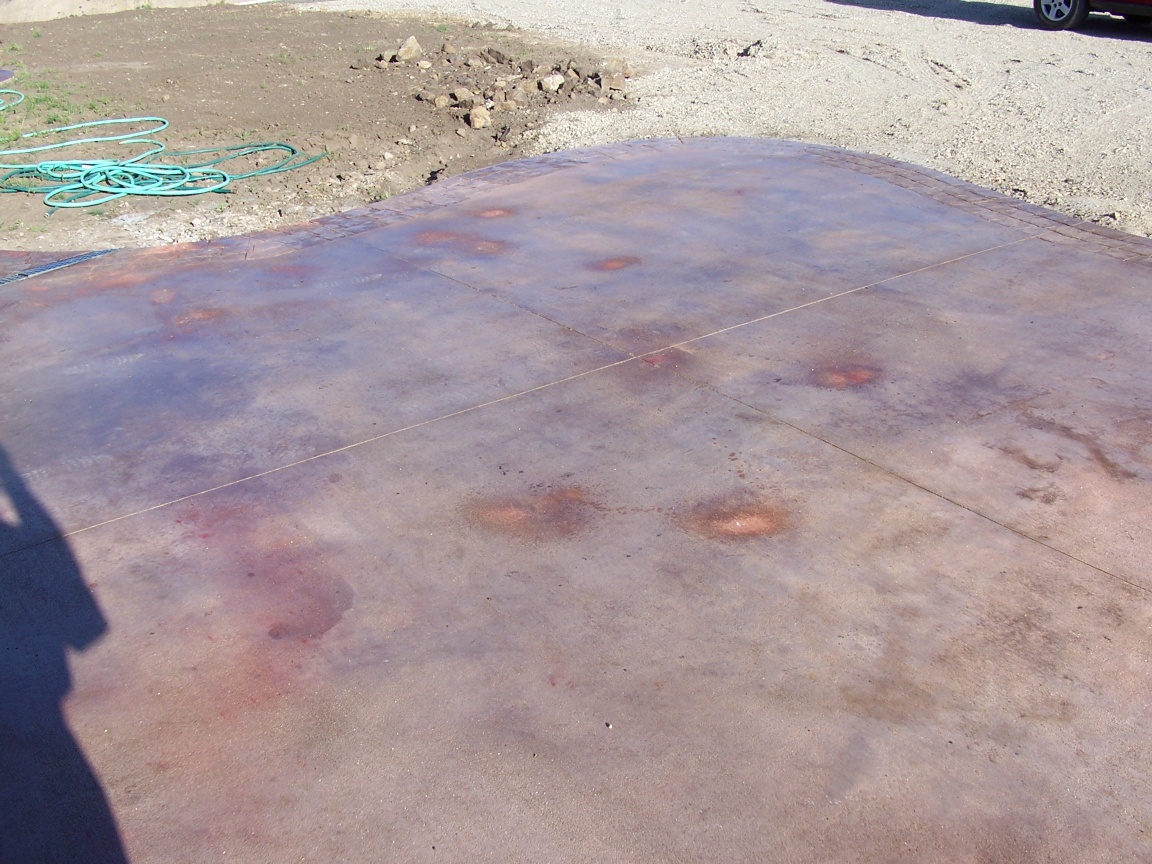
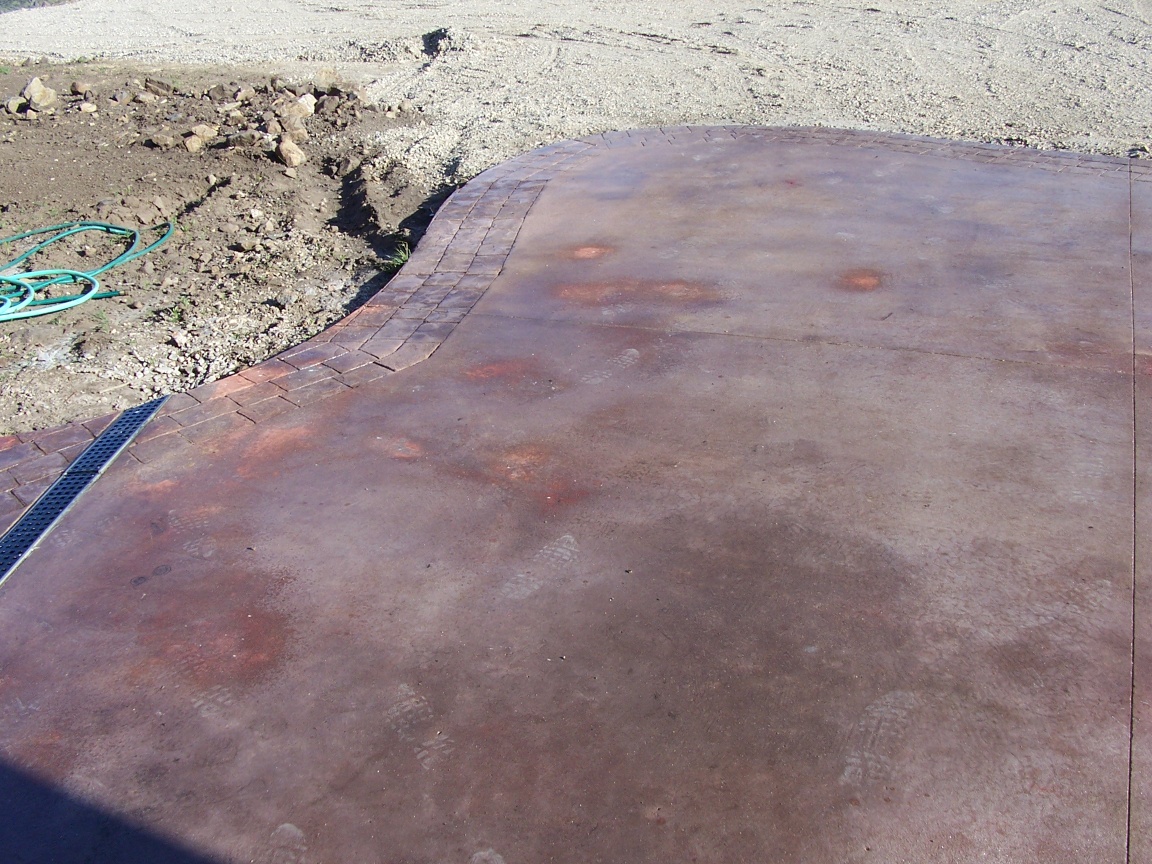
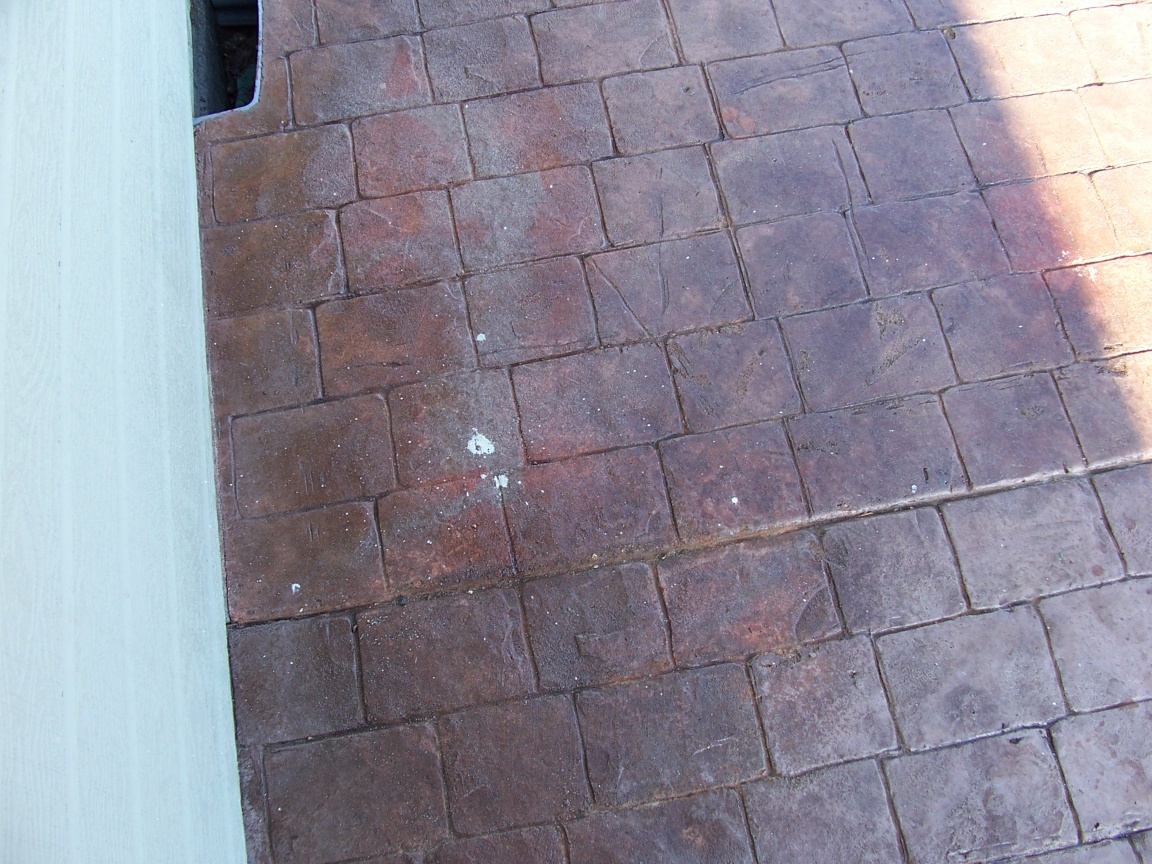
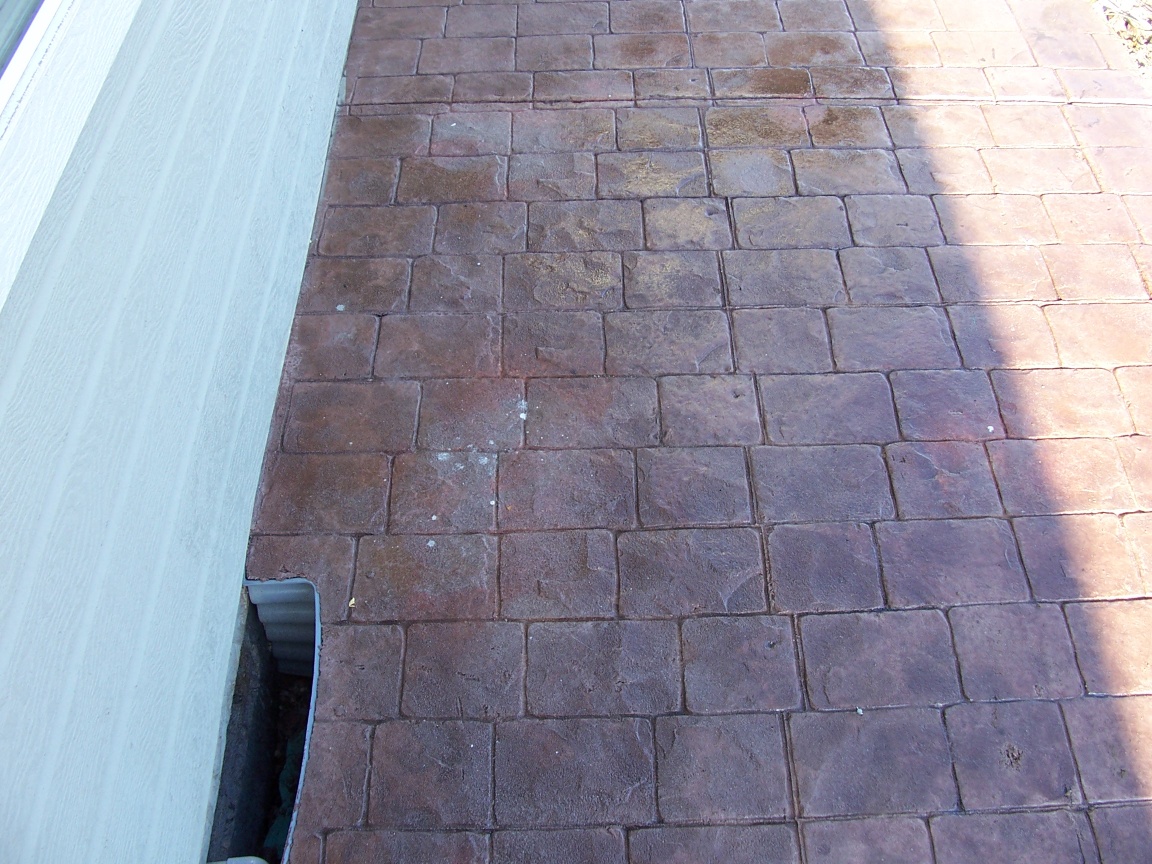
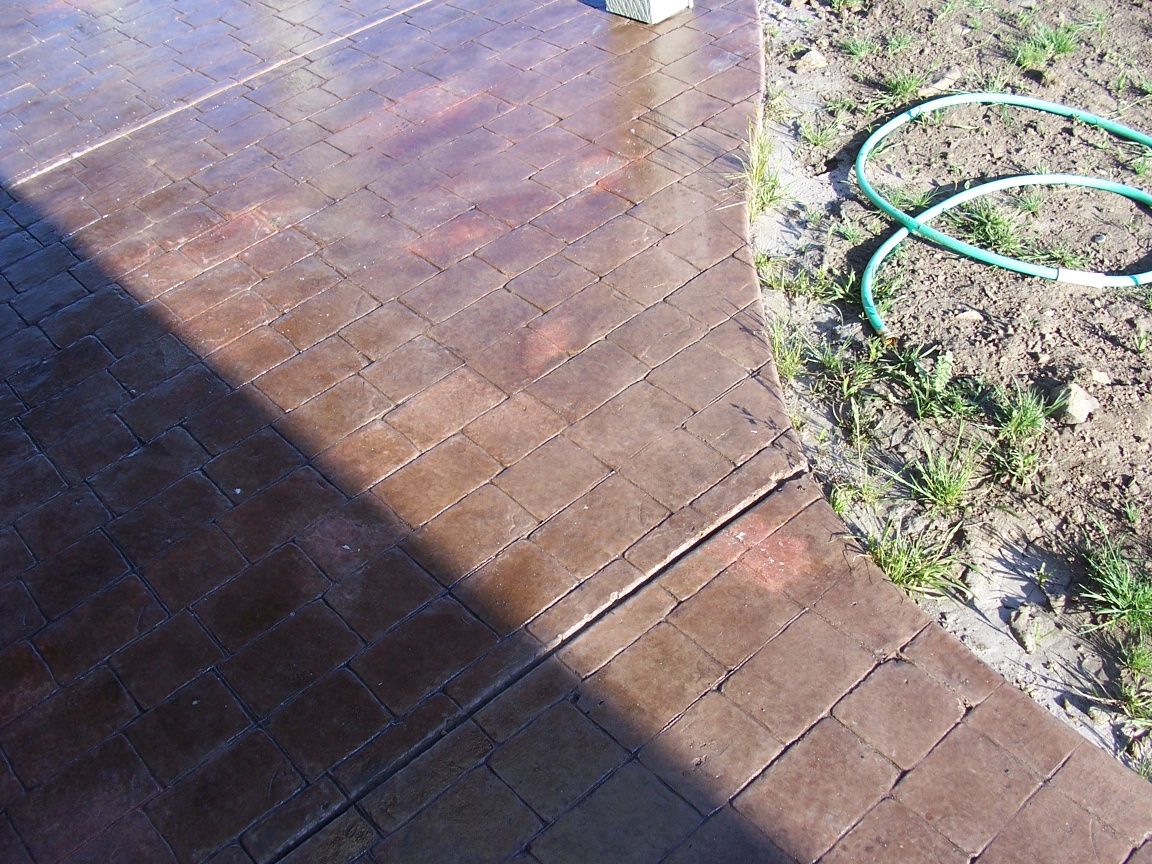
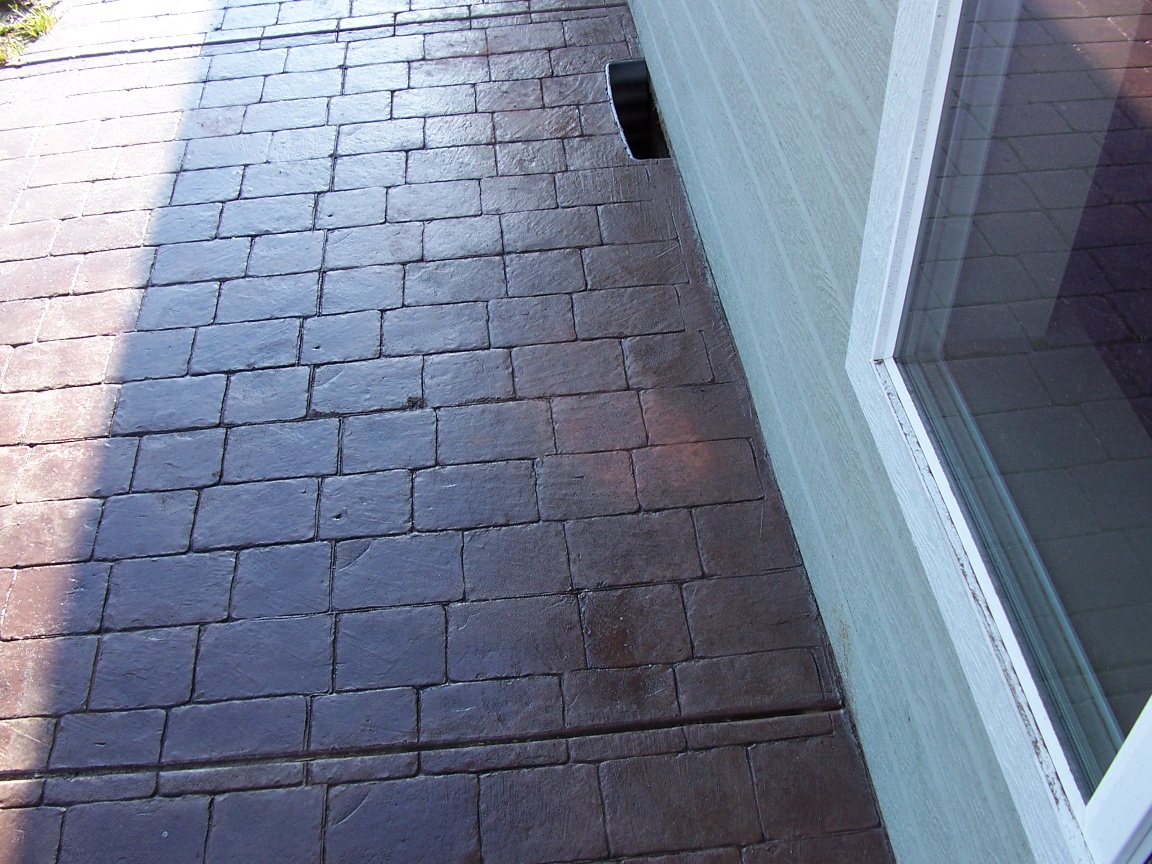
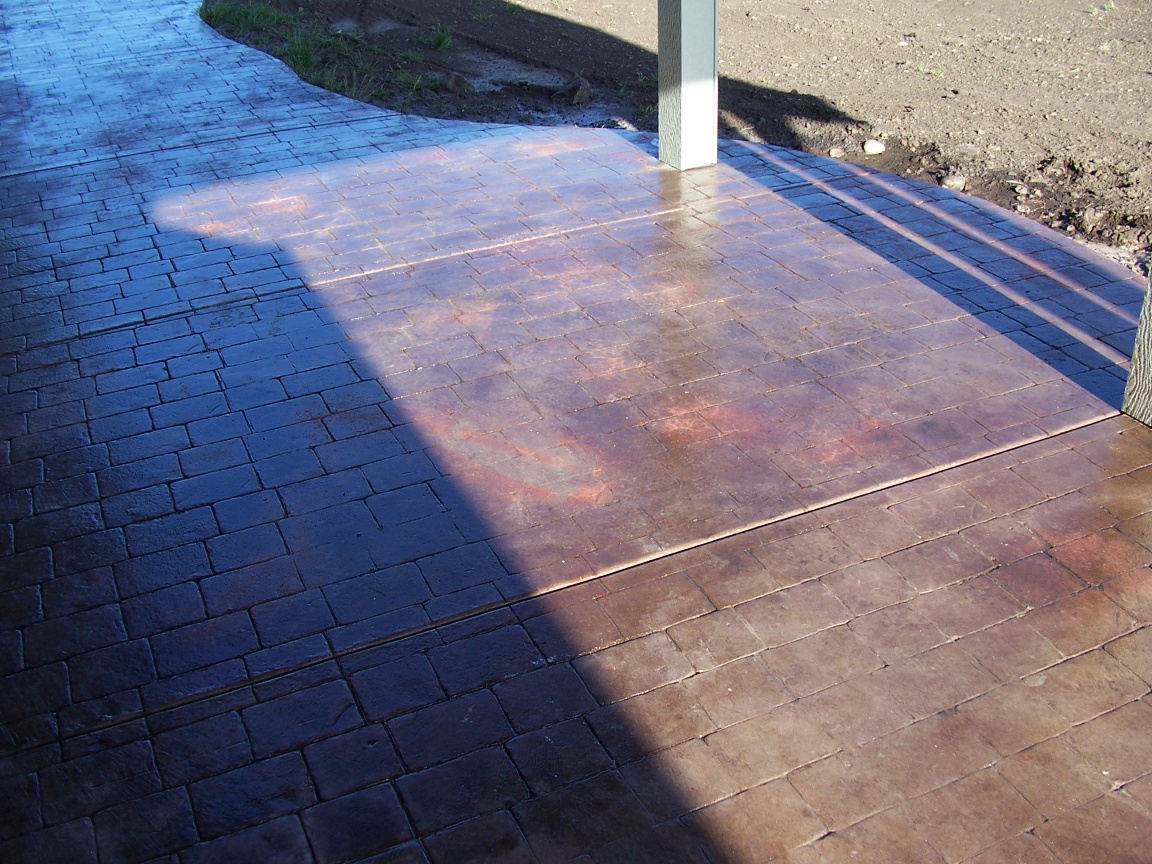
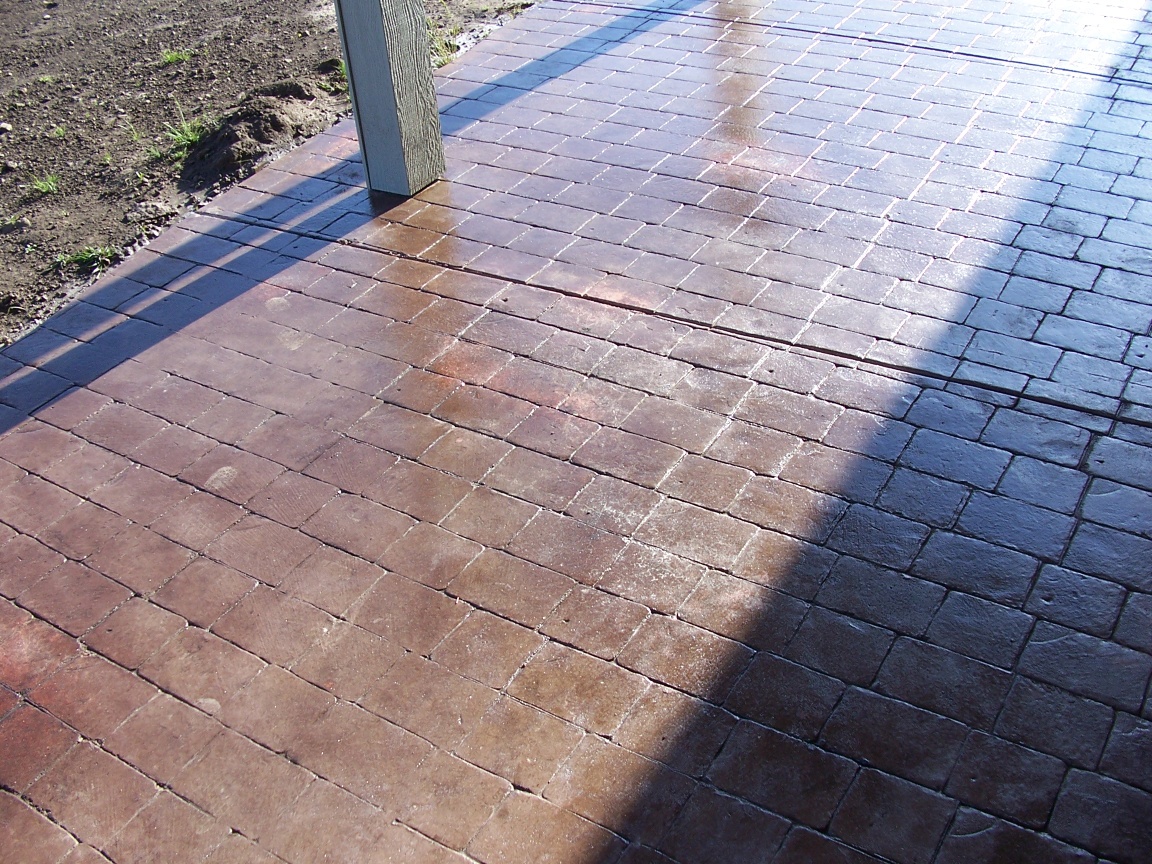
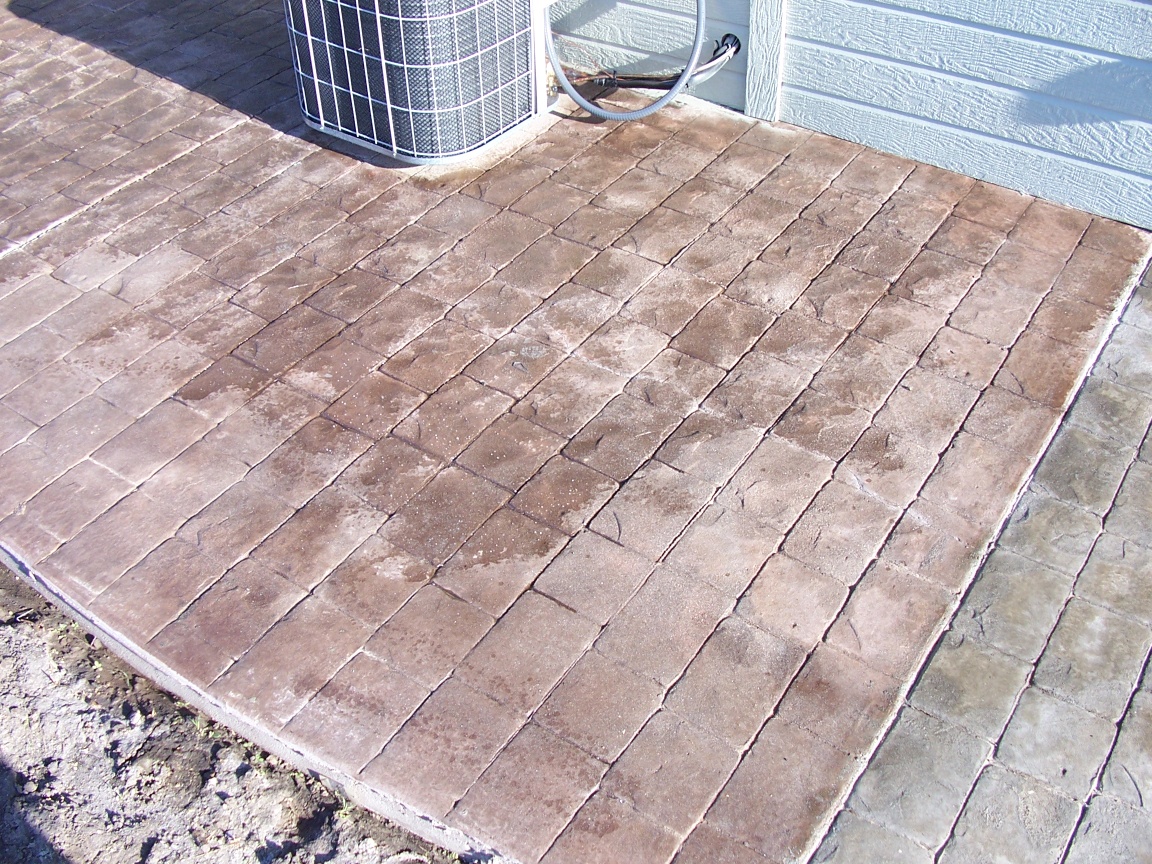
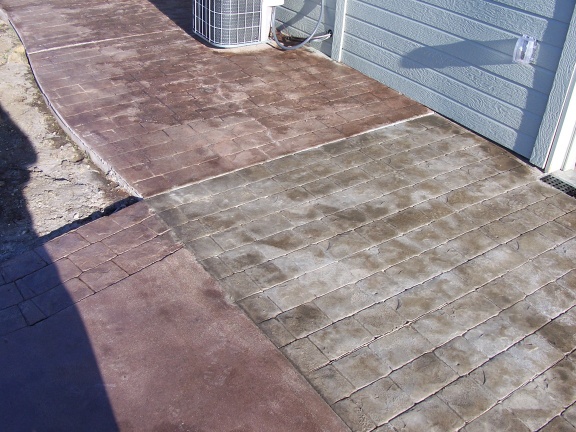
Here you can see where they patched cracks in the concrete with a gray material--which looks horrible.
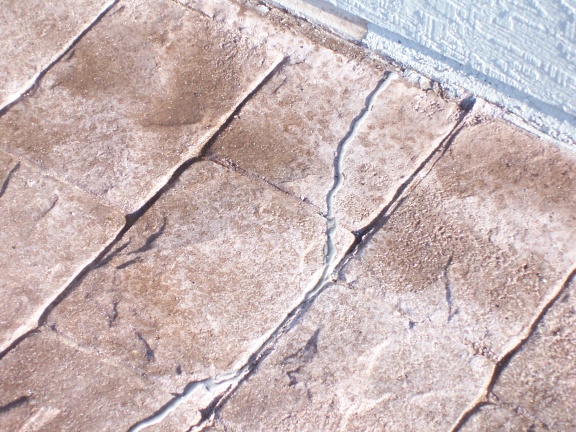
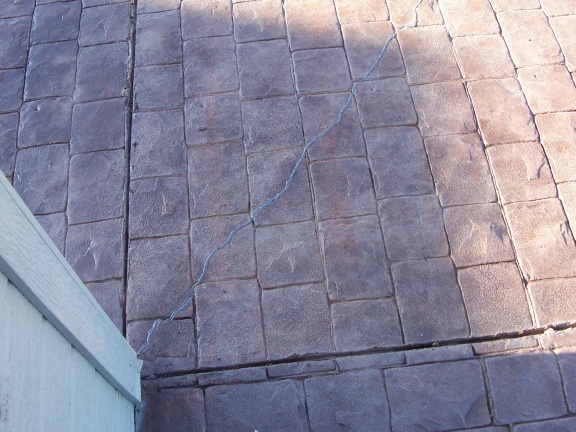
You can also see the problems with the stamping process. The theory is that the concrete guys stamp a pattern into the concrete when it is still wet. It adds visual interest to it, and makes it a bit less slippery when wet. Unfortunately, concrete has a limited lifetime after they mix it, and apparently the concrete guy failed to appreciate that in the time it took to drive to the building site, that much of it would no longer be stampable. In some places, it came out as it was supposed to, with both lines in the concrete, and real relief. In other places, the pattern is there, but barely, and there is no significant relief.
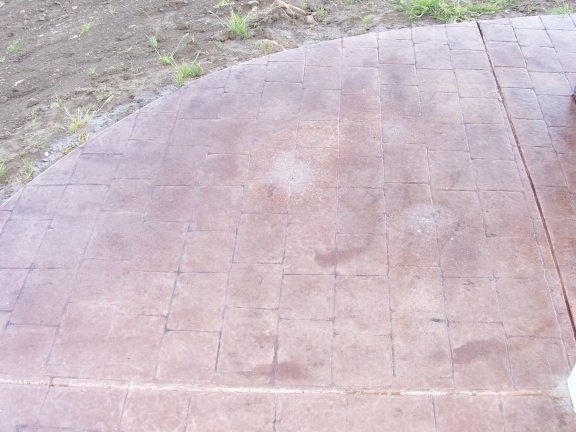
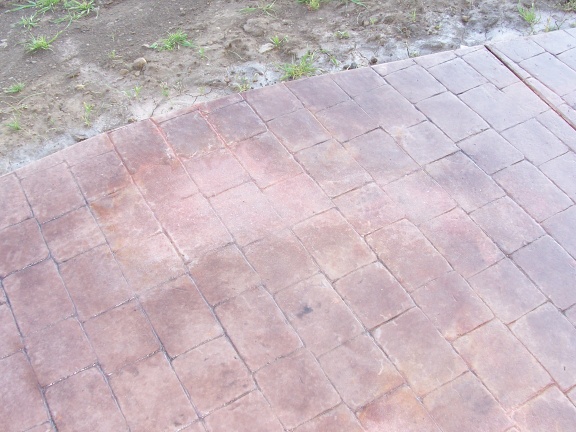
There are also just inexplicable patches of gray.
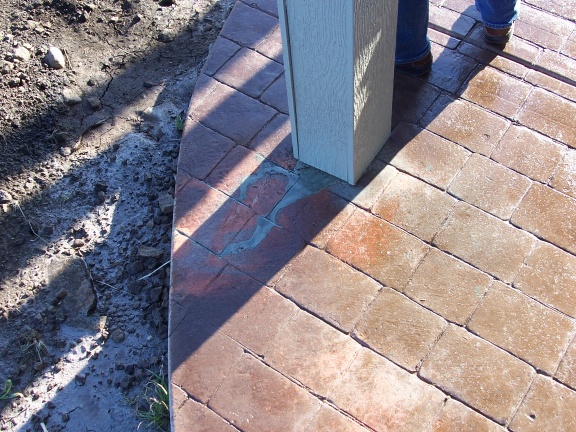
Here's a place where you can see a piece of the repour, and the concrete that they replaced. The gray stuff supposedly had the coloring agent added to it, but I sure don't see any sign of it. The concrete guy has decided that he is not going to do anything more to solve this problem.
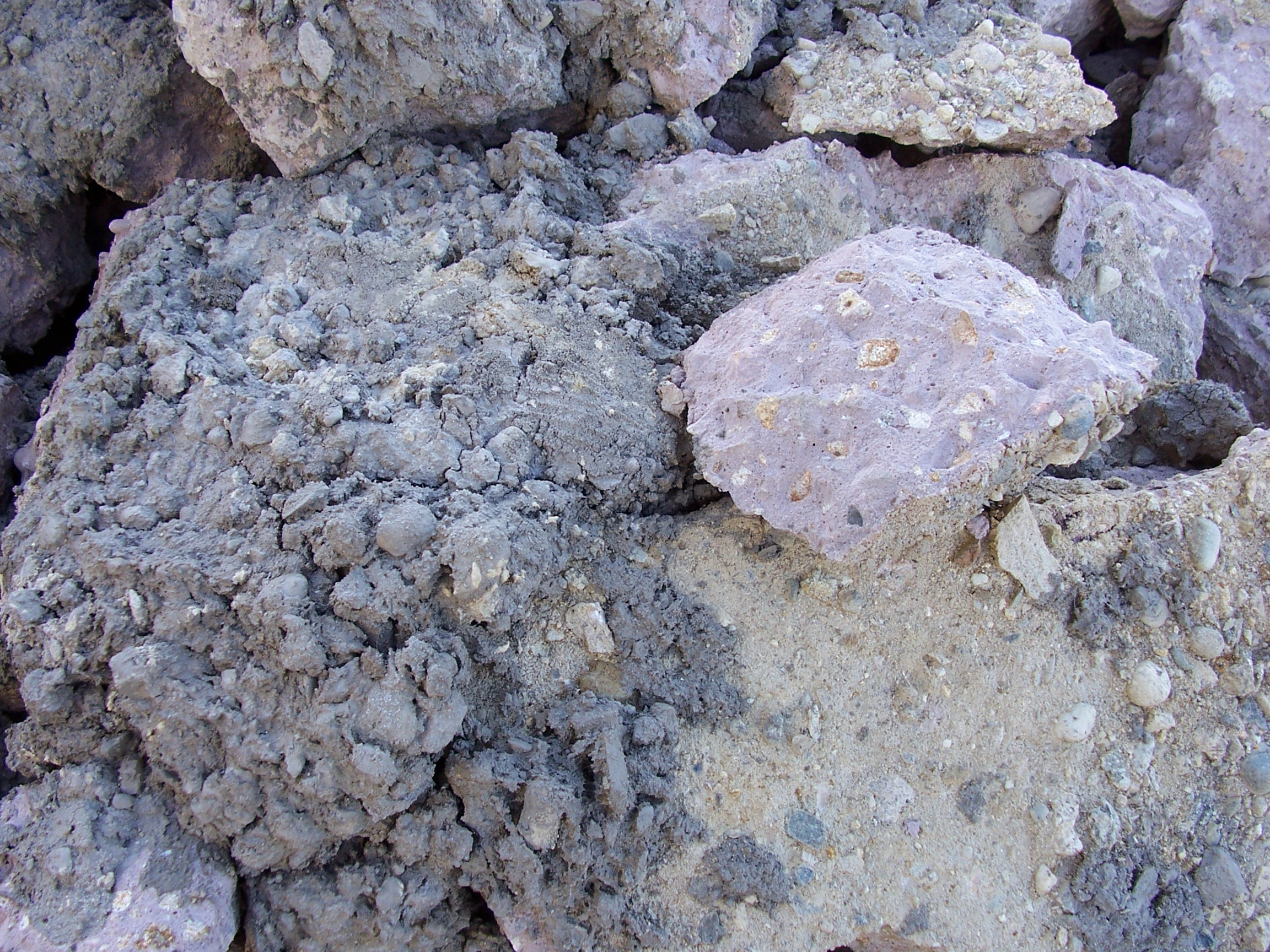
Next time, I'll just have gray concrete poured instead. We spent $3000+ extra for this stamped color concrete, and it was just money poured down a rathole.
Okay, enough whining. On to pictures that show the aching beauty of the place.
The wild flowers are starting to bloom; here's one why wife picked on the back part of the property.

Click to enlarge
Here's the view from the back porch, looking down into Horseshoe Bend. Spring has arrived!

Click to enlarge
Here's a zoom into where the Payette River enters town.

Click to enlarge
Here are a few of our neighbors. We call this house, "Abraham Lincoln wins the lottery." It is 14,000 square feet. The owner works for the post office. (There better be a big inheritance somewhere in that story, or I will be worried.)

Click to enlarge
Right down the hill from us is a property where the owner abandoned plans to build a house because of a divorce. There is a motor home parked there on a permanent basis, and quite a bit of...let's be polite...stuff. Supposedly he sold it late last year, but it still has enough stuff present that we call it Hooterville, after the town in the series Green Acres. We're cutting him some slack on the state of things; a divorce must be a profoundly wrenching experience.

Click to enlarge
I don't know much about this family down the hill, just that they have two little boys and more recreational vehicles than I can count. We briefly considered buying the white house when it was going into foreclosure last year. We could have bought it for $189,000, but it was just too small, and I think we ended up with a superior view and much superior home.

Click to enlarge
This house was one of the first built in this subdivision, back when it was called Solar City, because it had no electric power. The south face of the house has enormous windows which used to have photovoltatic cells in them. When the original builder left the area, he took the panels with him.

Click to enlarge
This is a very interesting house--something of a catalog of things not to do. It is clearly inspired by a New Mexico house called "Sun Cave," which was one of the early attempts to build an entirely solar house. Unfortunately, lots of details suggest to me that someone didn't adjust design features for our latitude. It does have a lot of big windows on the southern exposure, and it makes extensive use of ground piled around the north side of the house to reduce temperature loss--but it also means that the best view possible from the lot is a solid wall.
It has a four car garage, with RV sized doors. But the interior is built of tires, dirt, and chickenwire. It is amazingly ugly. Even more silly in this climate is that there is no direct access to the house from the garage.
The house is about 2000 square feet, but it is only a one-bedroom. It is a huge one-bedroom, but the net effect suggests an indulgent bachelor with gobs of money. When we looked at it last year, it was ten years old--and the roof was already leaking. It was offered at $210,000, but went into foreclosure.
I'm very glad we didn't buy it. It had three wells go dry over a period of about seven years, and except for my stepping in and pointing out that drilling a fourth well within a hundred feet of the other three didn't make sense, they were about to drill a fourth well that was likely to go dry. (I had them drill at the boundary between the basalt and the sandstone--nice well at 180 feet.)

Click to enlarge
We call this log cabin house. It is about 2400 square feet, but it had been unoccupied for at least a year until a family moved in last month. Leaving a house empty up here is a mistake; rats get in, and pretty soon, it was a pigsty. (A ratsty?) It wasn't a bad house, but it was built on a small lot with no particular view. On the other hand, it has a 400 gallon per minute well, which feeds a couple of other houses.

Click to enlarge
Almost lost in the trees is this rather unusual house currently owned by Chuck, who is the chief of police of a nearby town. It was apparently built by amateurs, and he tells me that there were some interesting struggles getting it to a useful state.

Click to enlarge
This is a Guerdon manufactured home. We briefly considered having a very similar model installed on our property. I think, in retrospect, we made the right choice to have something site-built, but it would have been substantially cheaper.

Click to enlarge
Last house project entry.
No comments:
Post a Comment